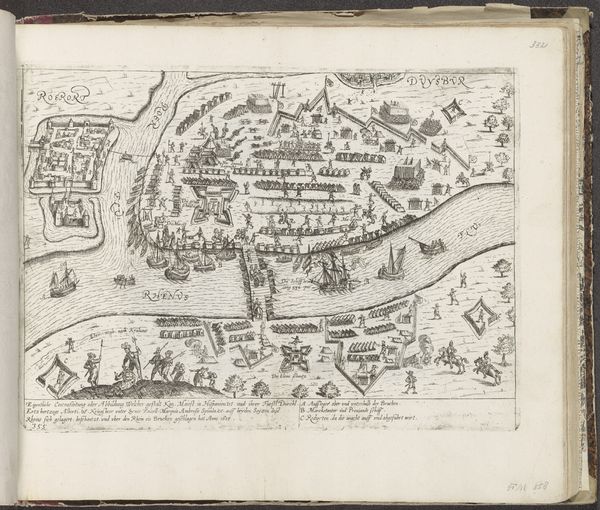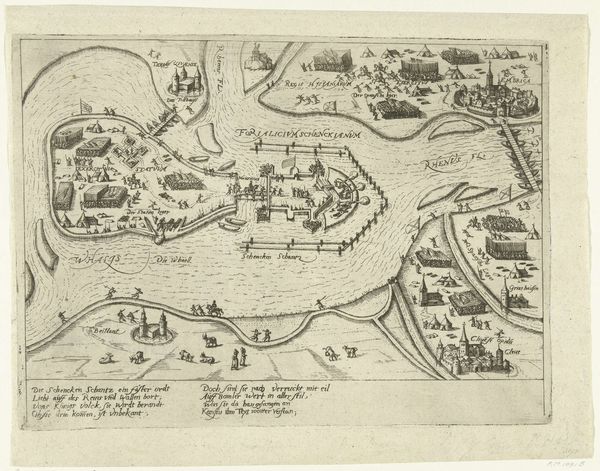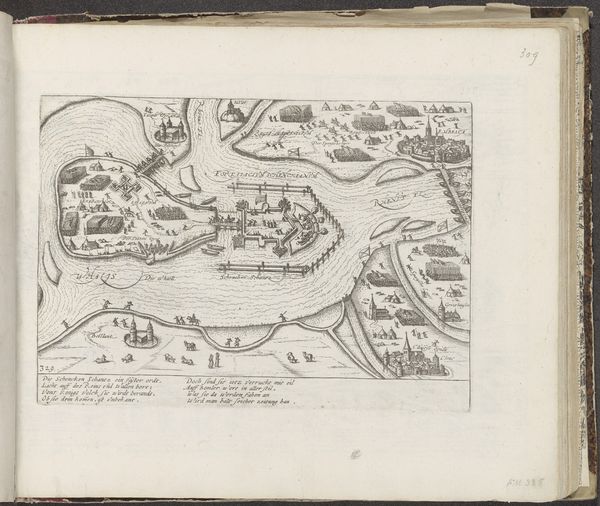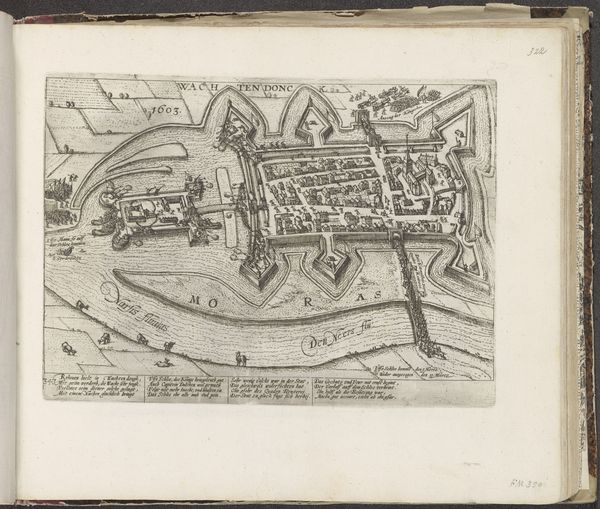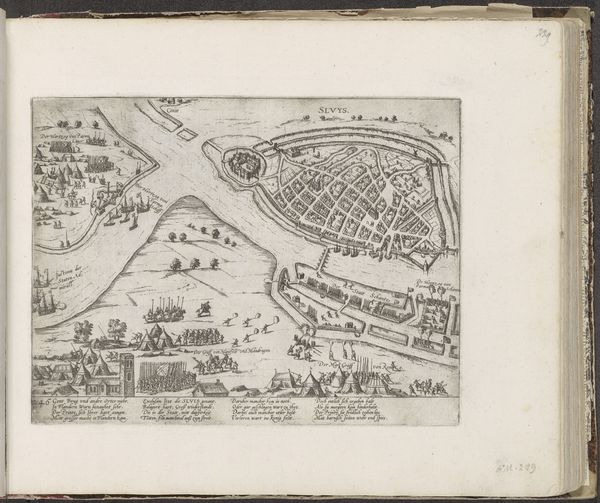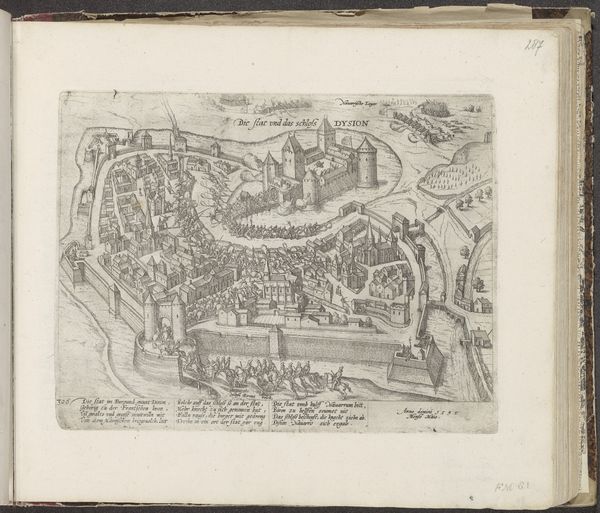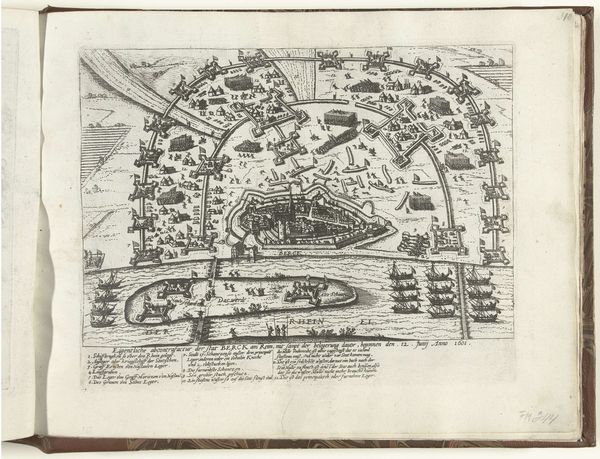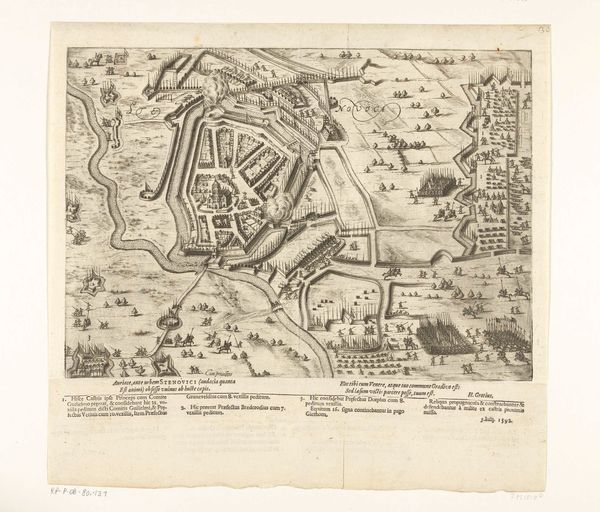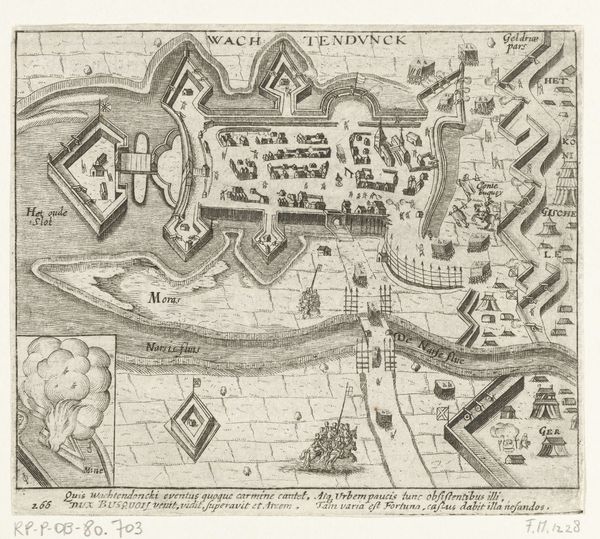
print, etching, engraving
#
medieval
# print
#
etching
#
landscape
#
cityscape
#
history-painting
#
engraving
Dimensions: height 273 mm, width 356 mm
Copyright: Rijks Museum: Open Domain
This is Frans Hogenberg’s 1605 print, now at the Rijksmuseum, depicting the conquest of Wachtendonk. Observe the prominent fortifications – bastions, moats, and walls. These are not merely architectural features; they are symbols of power and defense, reflecting a society structured around conflict and security. Consider how these forms echo through history. The Roman castrum, the medieval castle, and even modern military bases share this visual language of enclosure and resistance. The psychological impact of these defensive structures is profound. They represent not just physical safety, but also the containment of fear and the assertion of control over a chaotic world. Yet, such symbols are never static. Over time, the meaning of a fortified structure shifts. It can become a symbol of oppression, a target for rebellion, or even a nostalgic emblem of a bygone era. It is this cyclical recurrence and transformation of symbols that reveal the complex interplay between our past and present.
Comments
No comments
Be the first to comment and join the conversation on the ultimate creative platform.
